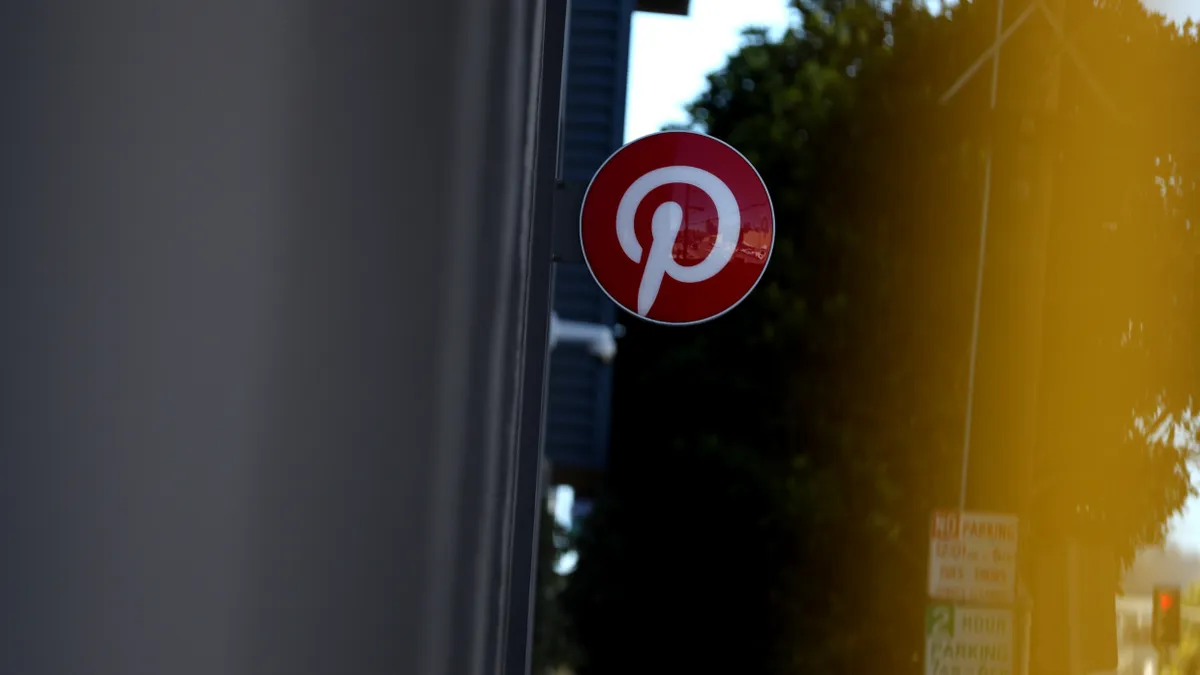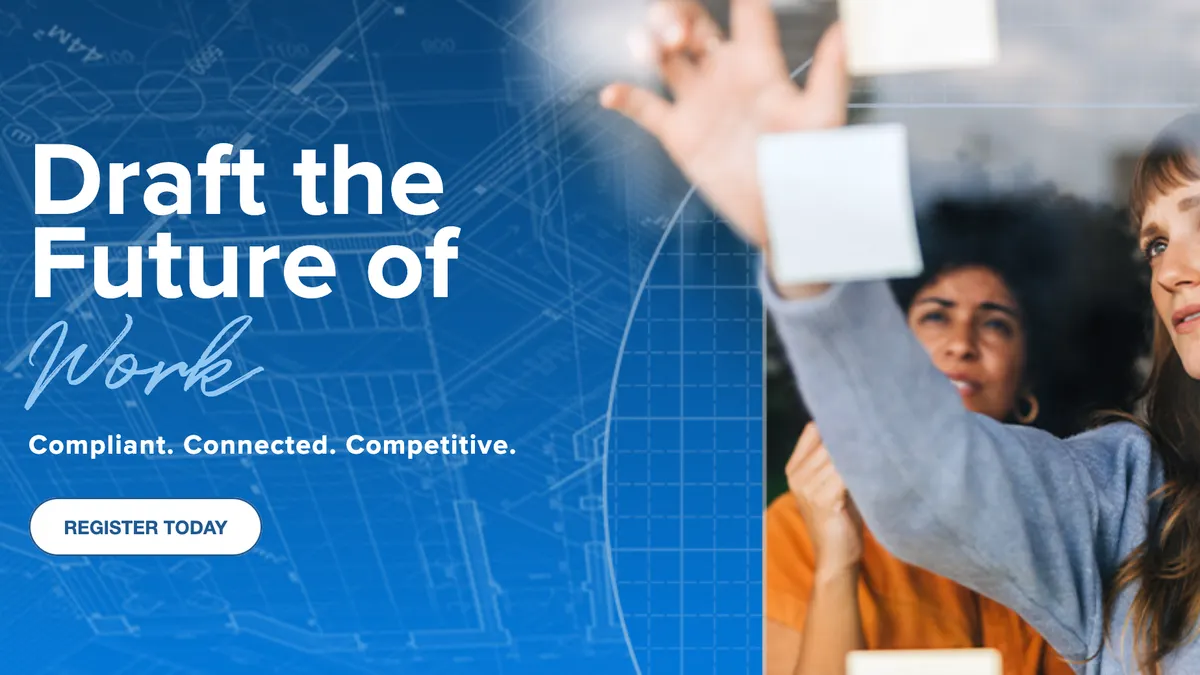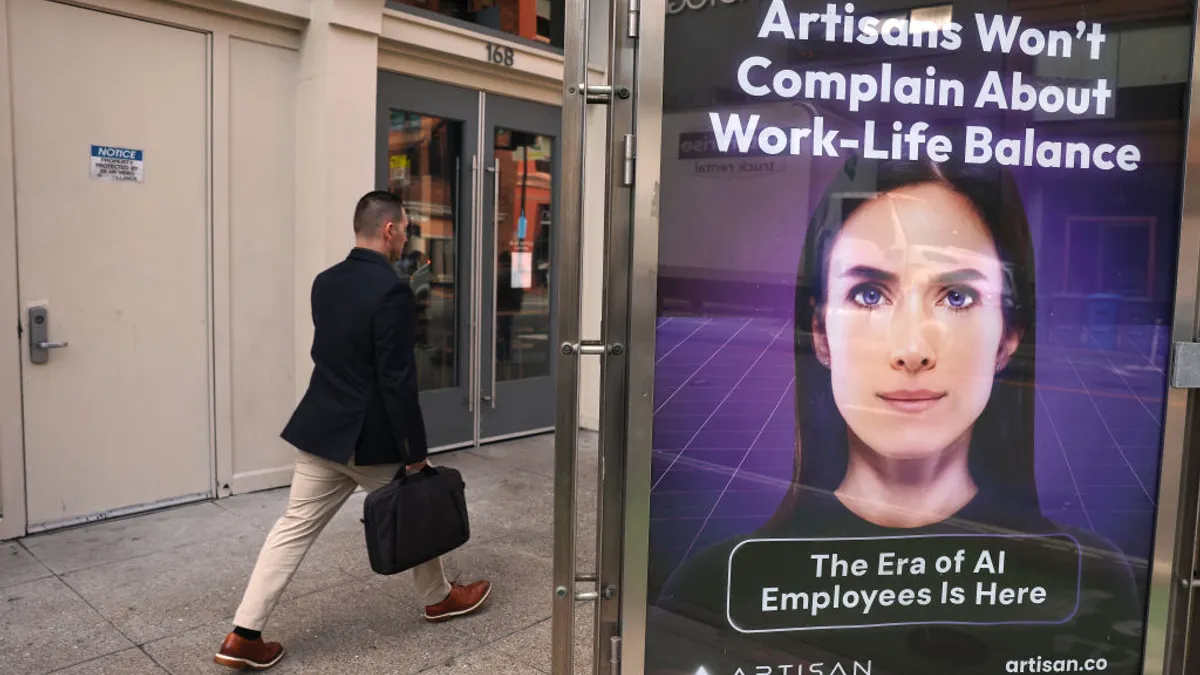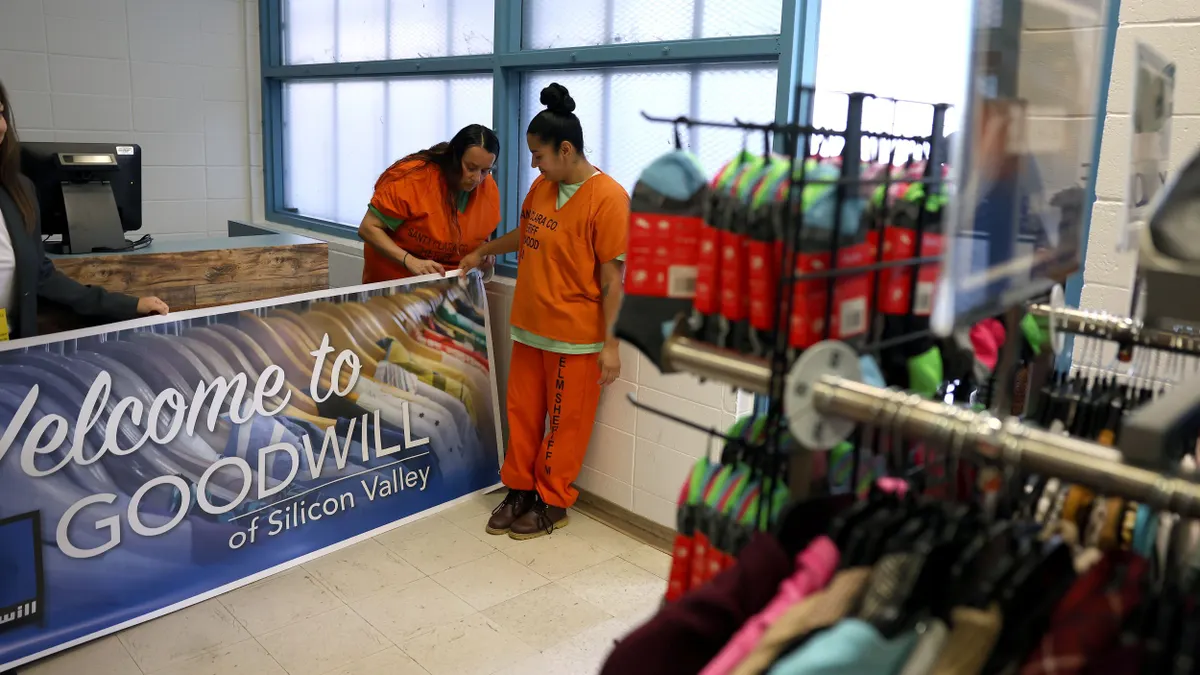Correction: In a previous version of this article, Pinterest's Makeathon event was misidentified.
Amid mass reports of companies — and the federal government — requiring workers to return to the office, one social media player is leaning into flexibility.
Known as a haven for creatives and DIY-ers, Pinterest marked the one-year anniversary of its flexible work model this summer. Dubbed PinFlex, the initiative encourages employees who work remotely to do so from wherever they want. In turn, the company covers travel and expenses for outlying workers when they do need to come into the office.
In an interview with HR Dive, Christine Deputy, Pinterest’s chief people officer, reflects on the benefits and challenges of implementing a flexible work program for the company’s 3,500 employees.
This interview has been edited and condensed for clarity.
HR Dive: What is your take on this model now one year later?
Deputy: We're seeing a more distributed workforce around the world. We're seeing really effective collaboration, and employees feeling really supported. We're hearing from them that choosing where to work gives them a sense of empowerment. They have the ability and respect from us as leaders in the organization to make decisions that support their work style.
We're also really excited that we're seeing this flexible model facilitate effective collaboration. We know there's sort of a conventional view that you really need to be in the office to have effective collaboration, but we're seeing that our employees are really networking well with peers and they don't have to be tied to one physical location.
What kind of growing pains have you had in implementing this model?
As the year has progressed, we've asked our leaders to create what we call the rhythms of their business. “What's the frequency that they're bringing their teams on site? What frequency do they have virtual meetings?” Some teams are saying, “Hey, we need to get together more frequently,” and other teams are saying, “Hey, we're okay. We only do it once a quarter.” And we’ve had different moments in time where we have asked teams maybe not to do as much travel, and yet they're still finding ways to stay connected.
As we onboard new employees — early career employees — we're finding that as part of their onboarding process, getting them time in-person to connect with other folks in the organization or on their team makes a big difference in how effective they can be and how they can build those connections.
When do workers go into the office?
We encourage them to come in and be connected throughout the year. We support them in traveling into the office, but we want them to do it when there's a purpose associated with it.
It’s when we’re planning or brainstorming around a particular project, or we're doing a cultural event like a Q&A, or we have programs called Knit Con or Makeathon. Those moments are really impactful moments. Employees really value them, because they know they're doing something unique together.
What does your distributed workforce look like?
There was more of a sense of building the workforce around the offices that we had pre-COVID. We would hire all of a particular function in a particular geography, and now we're much more open to hiring people across multiple geographies. For example, in a recruiting role, you don't necessarily have to be based in San Francisco. That gives us access to all of the U.S. to hire a recruiter and gives us access to a broader workforce.
How did the rollout go?
Our goal was really to connect. We want pinners to leverage our platform to do things in real life and to be inspired by the incredible content that we have on the platform. We started there when we thought about our culture; our culture is about inspiring people to create a career that they love. We do that through the connections and the relationships and the work as well.
Wellbeing is a really important component of our platform, and we want to be a safe place for people to come. So we've thought about that, as well as things like autonomy, flexibility, predictable work schedules, all of those things are things that we put down as sort of our first principles.
Then, we started to discuss how to show up in our work policy or flexible return to work policy. We wanted to work to lead the decisions around where the work needed to be done, as opposed to the decisions being about being in person a certain amount of time. One of the phrases we leveraged was that we really wanted to ‘earn the commute.’
What did the workforce look like a year ago?
A year ago, we were going through COVID and were all remote during that period. Prior to COVID, the majority of our population was concentrated in the San Francisco market, and we had some global offices. The majority of our population was in office and located close to one of our many offices.
How have you found this policy affects your recruiting efforts?
We see it as a really positive influence. We have a more distributed workforce. As you start to be more distributed, you have access to more diversity.
As part of our employee voice survey, we asked our team members to tell us how they feel about this program. It consistently scores in the highest ranking of our employee survey, usually with about an 8.9 out of 10 rating. We're seeing it as a positive part of our employee retention, and it does attract employees because they like the opportunity to be flexible and not have to move from where they live to another location in order to join the company.
Would you say there are any downsides?
I don’t think that there’s a downside. The opportunity is to continue to stay really intentional about the work and about bringing teams together. We want to be really intentional and listen to our employees. We're asking questions; we're regularly surveying; and we’re asking our managers to be thoughtful about what's working and what's not working with the team.
We do some work with the Surgeon General, and he built out a framework for workplace mental health and wellbeing. What the Surgeon General found is that work-life harmony really has a positive impact on wellbeing when you think about autonomy over how work is done, flexibility and being given access to paid leave, which is something that we provide and boundaries between work and non-work time. We have this more, I would say, dynamic way of working, and we're leaning into it. And I think it's a very positive thing for leaders to be doing.






















